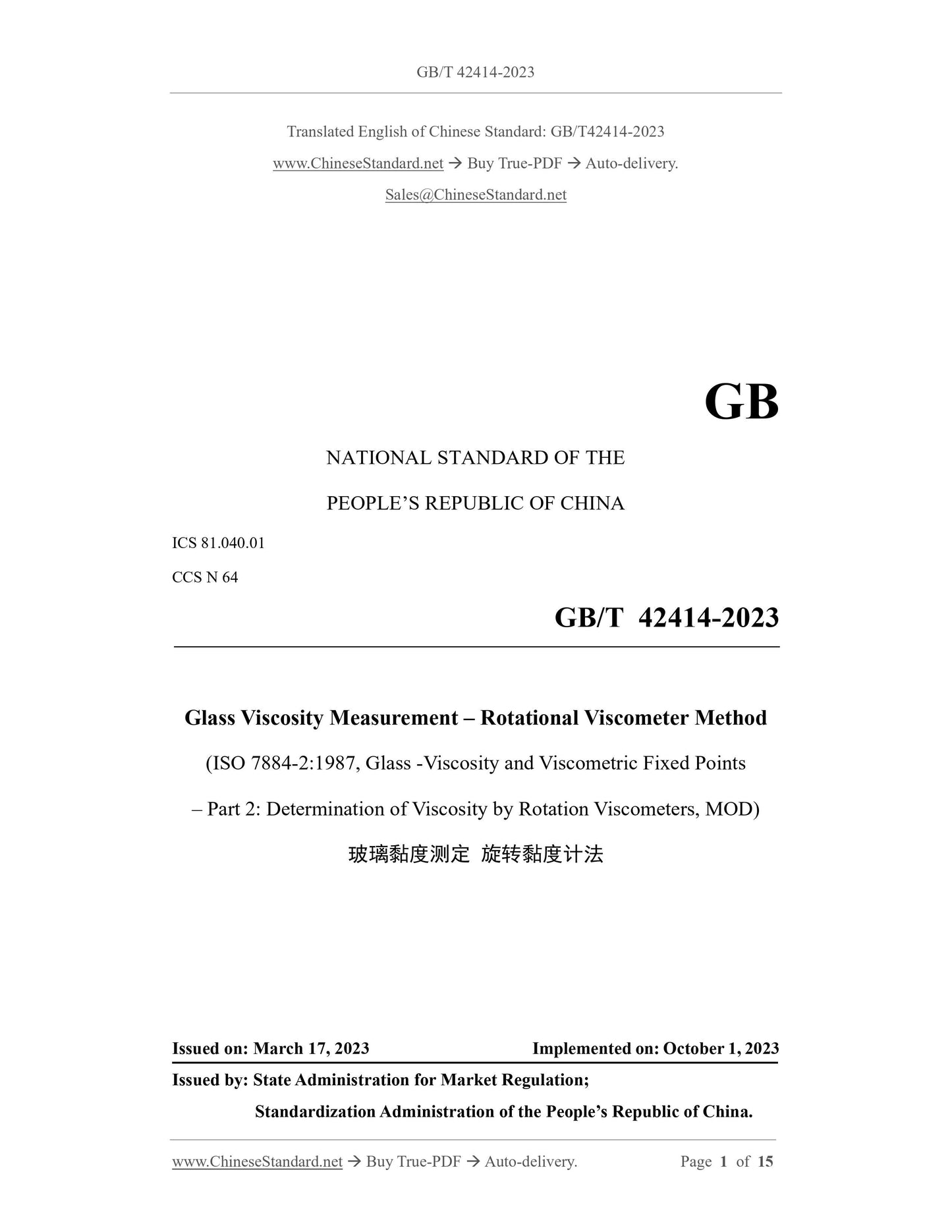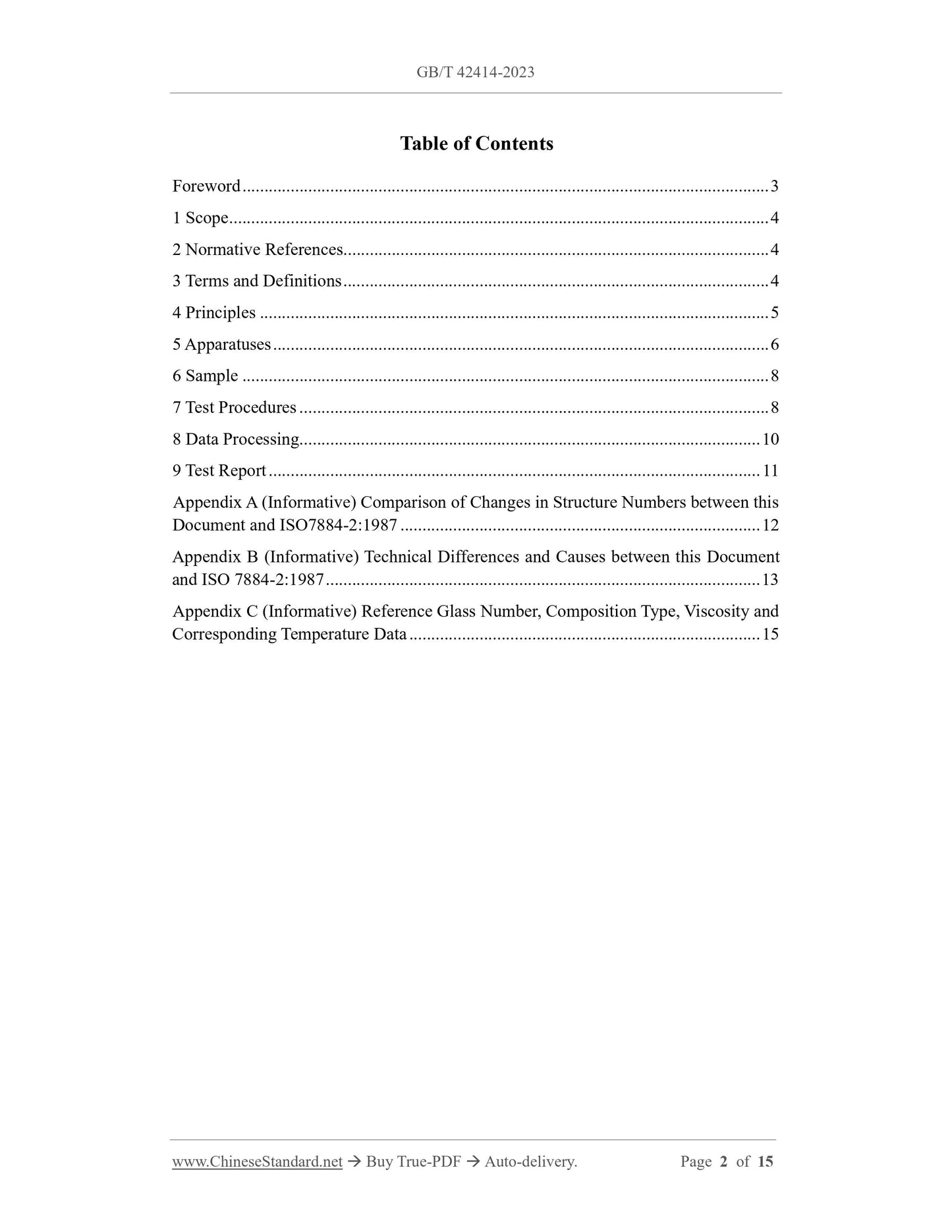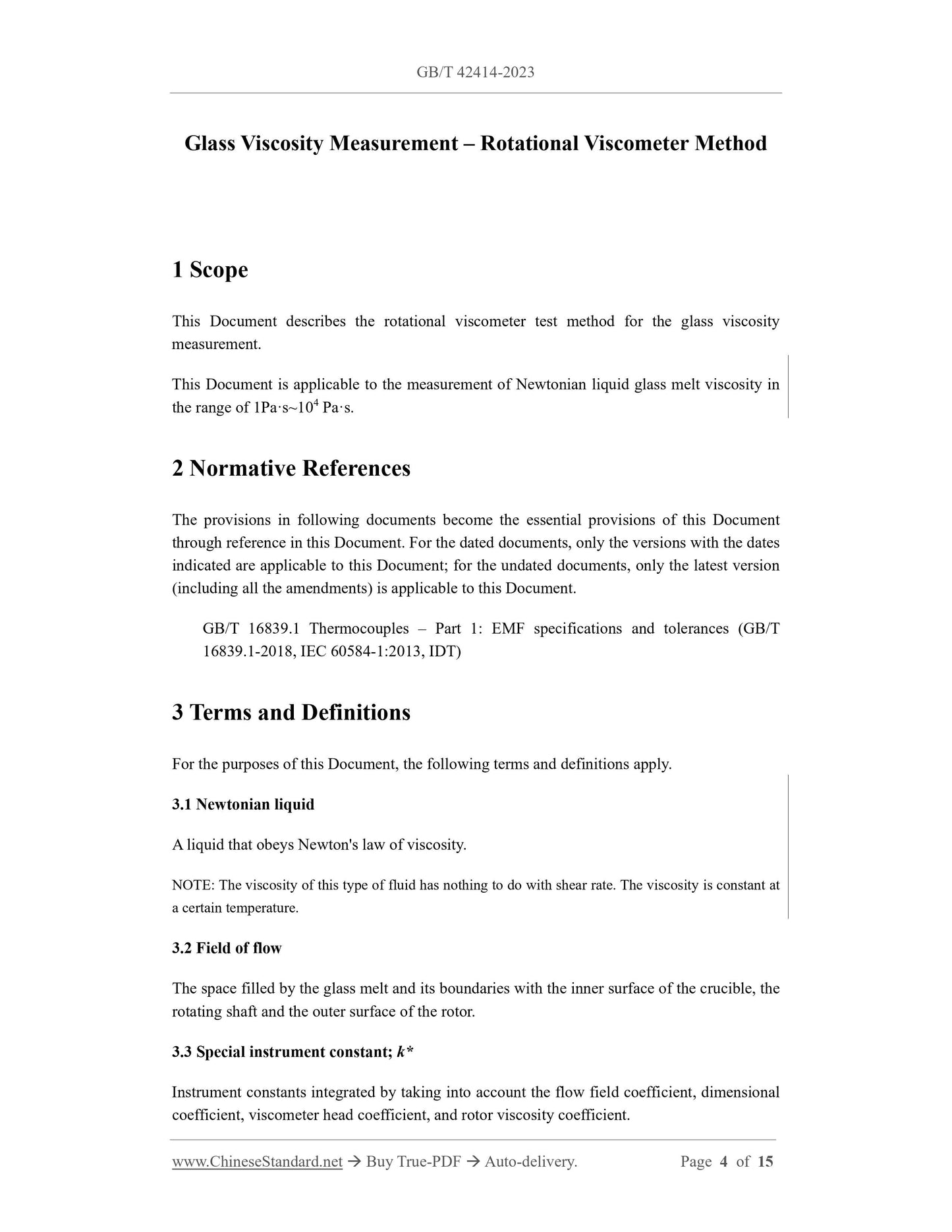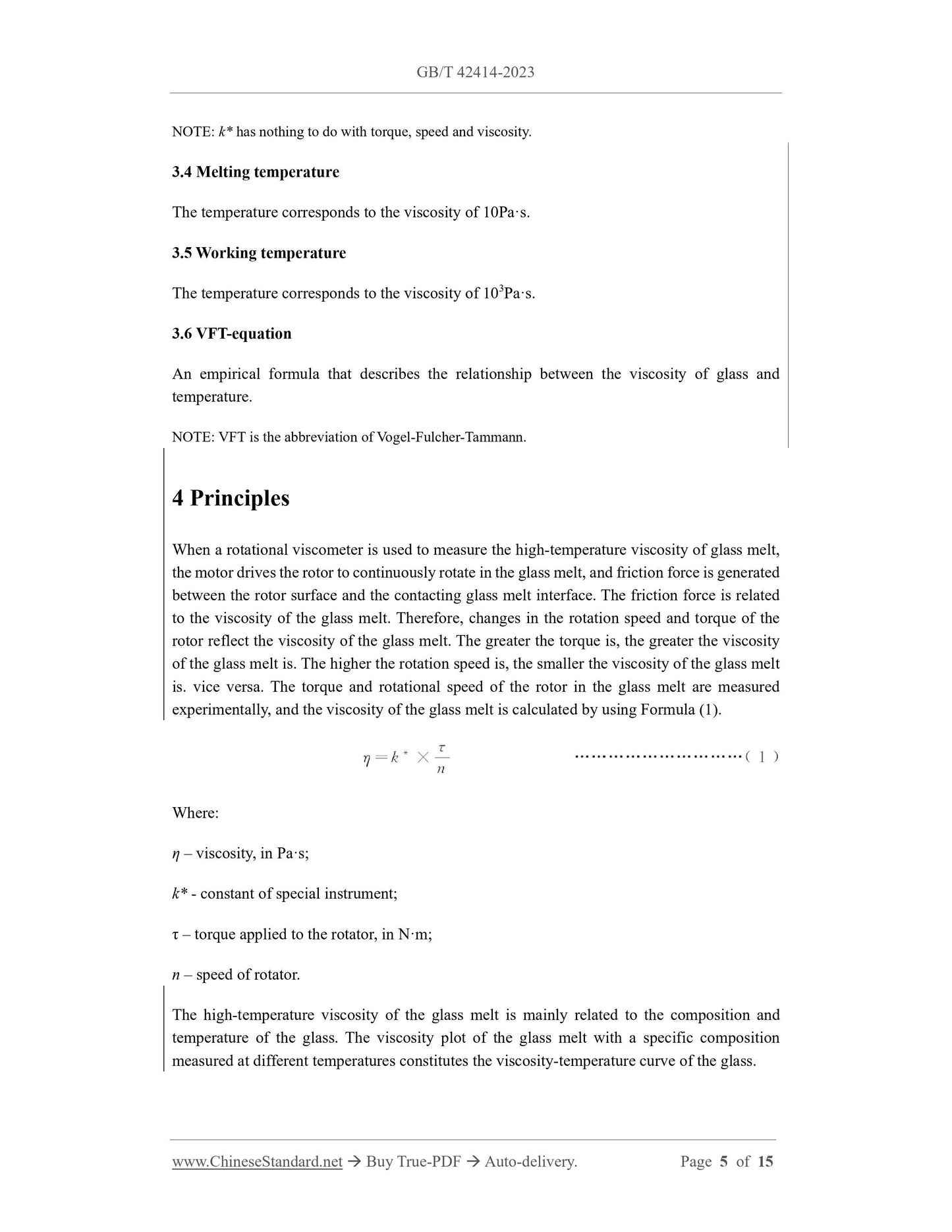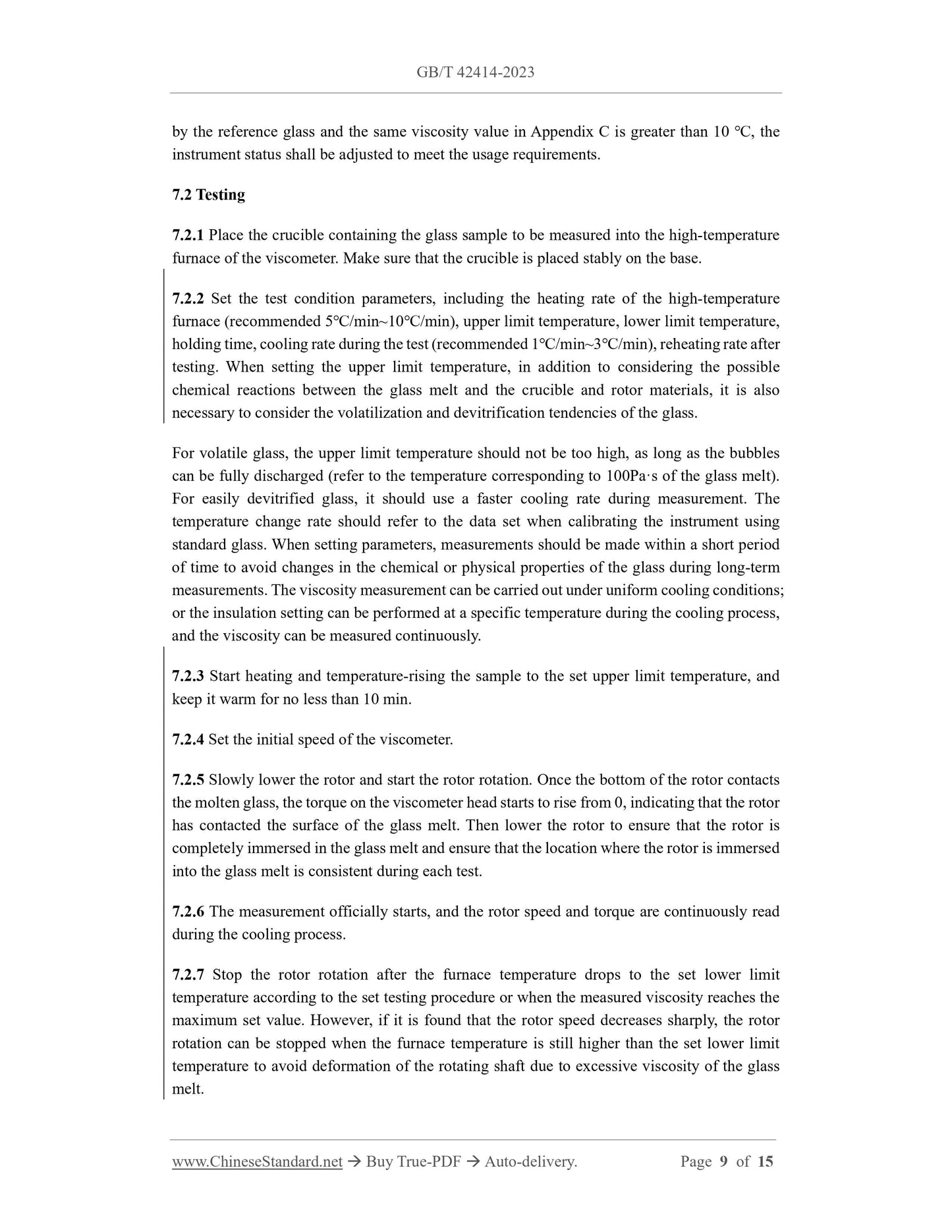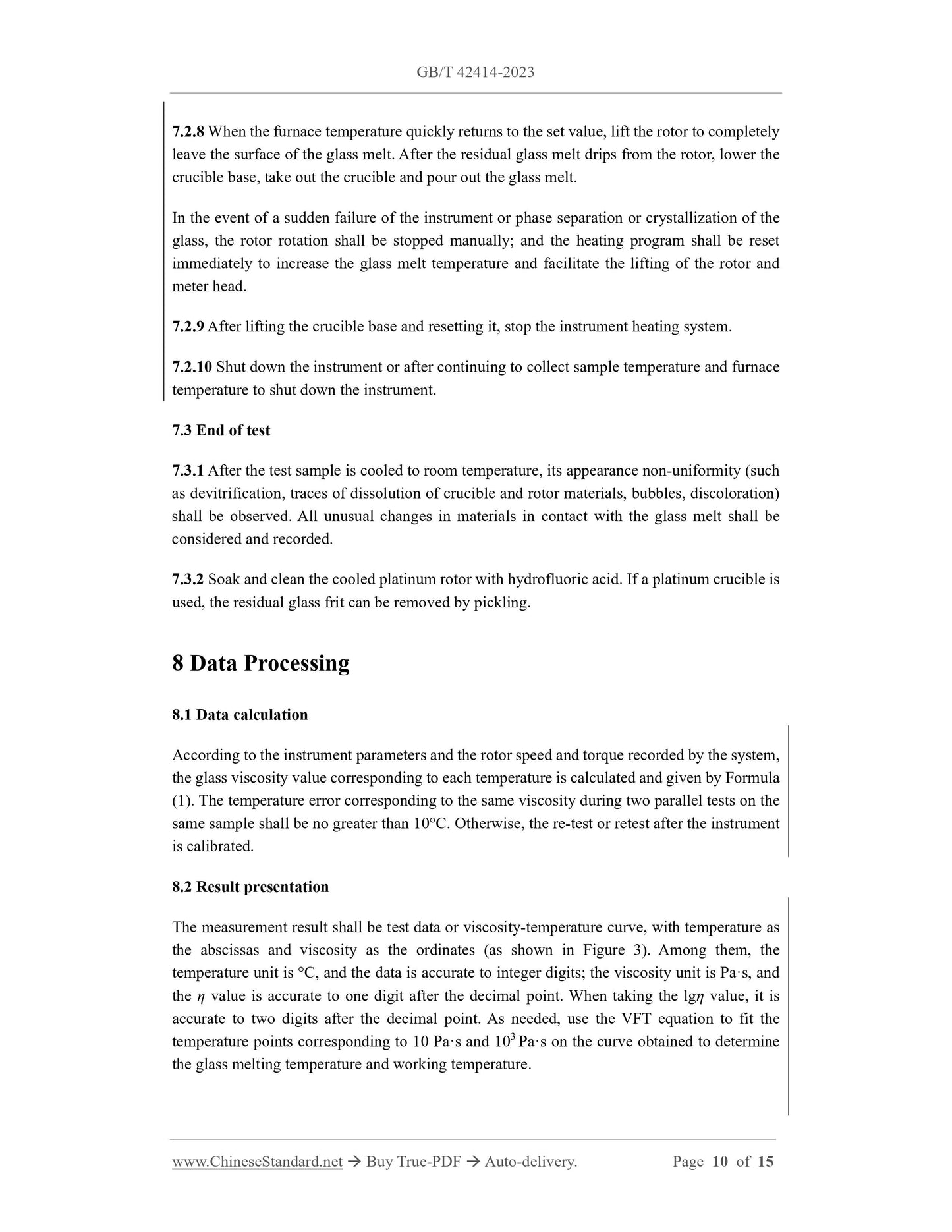1
/
of
6
www.ChineseStandard.us -- Field Test Asia Pte. Ltd.
GB/T 42414-2023 English PDF (GB/T42414-2023)
GB/T 42414-2023 English PDF (GB/T42414-2023)
Regular price
$230.00
Regular price
Sale price
$230.00
Unit price
/
per
Shipping calculated at checkout.
Couldn't load pickup availability
GB/T 42414-2023: Glass viscosity measurement - Rotational viscometer method
Delivery: 9 seconds. Download (and Email) true-PDF + Invoice.Get Quotation: Click GB/T 42414-2023 (Self-service in 1-minute)
Newer / historical versions: GB/T 42414-2023
Preview True-PDF
Scope
This Document describes the rotational viscometer test method for the glass viscositymeasurement.
This Document is applicable to the measurement of Newtonian liquid glass melt viscosity in
the range of 1Pa·s~104 Pa·s.
Basic Data
| Standard ID | GB/T 42414-2023 (GB/T42414-2023) |
| Description (Translated English) | Glass viscosity measurement - Rotational viscometer method |
| Sector / Industry | National Standard (Recommended) |
| Classification of Chinese Standard | N64 |
| Classification of International Standard | 81.040.01 |
| Word Count Estimation | 13,159 |
| Date of Issue | 2023-03-17 |
| Date of Implementation | 2023-10-01 |
| Issuing agency(ies) | State Administration for Market Regulation, China National Standardization Administration |
Share
